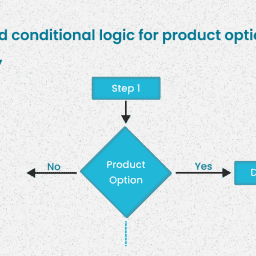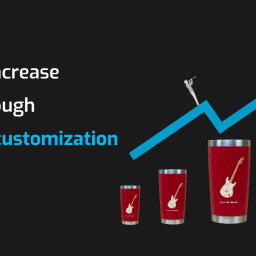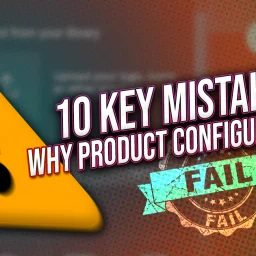Last Updated on August 1, 2025
You’ve set up your online store, added your products, maybe even spent a bit on ads – but somehow, the numbers just don’t look right. The sales are slow, and you’re not really sure where all the money’s going. Sound familiar?
This is something a lot of eCommerce store owners face. The good news is, there’s a way to fix it. If you want to increase eCommerce ROI, you don’t need fancy tools or big budgets. What you need are smart, simple strategies that actually work.
Table of Contents
What is e-commerce ROI?
ROI or Return On Investment is a popular metric used to measure the outcome of an investment. With ROI, merchants can directly compare the return on a particular investment. So, through ROI calculations, merchants evaluate the efficiency of a single or different investment.
This is the biggest concern for most businesses about what return they are getting on their investments. In this article, you are going to learn how to calculate ROI and what are the crucial matrices to improve your eCommerce business ROI.
How to Calculate ROI for Your Online Store
To calculate ROI which is expressed as a percentage, just divide the return on your investment by the cost of your investment. The formula is as follows –
ROI = (Current Investment Value – Cost of Investment)/Cost of Investment
Let us say, you have invested $1000 in your pizza business. After one year, if you sell the share for a total of $1300, the Return On Investment or ROI will be –
Here,
Current investment value = $1300,
Cost of investment = $1000
ROI = ($1300 – $1000)/$1000 = $300/$1000 or 30%
Know more about ROI from here.
5 Easy Ways to Increase Your eCommerce ROI
So you have set up your online store, right? Now you realize how challenging it is to get traffic and get more loyal customers. Saving customers’ valuable time and optimizing your online store are key strategies to increase ecommerce ROI while boosting overall business performance. . Follow the below guidelines to improve your ROI.
- Set Your ROI Goal
- Track The Important Metrics That Influences Your ROI
- Deploy Necessary Tools To Your Online Store And Customers’ Experience
- Focus On Your Content & Improve Your Social Media Presence
- Track Different Marketing Channels & Find Which Works Better
#1. Set Clear, Trackable ROI Goals
The first step to increase ecommerce ROI is to set an ROI goal. Once your goal is set, it will be easier to measure your progress. In that case, make a goal that is specific, measurable, achievable, relevant, and time-bound (SMART).
- Set a specific goal like “Increase ROI by 20%”
- Once you progress in achieving your goal, make it measurable by establishing a proper data collection method.
- Do not go after any unrealistic goals.
- Make it relevant. For instance – suppose your main goal is to improve your AOV (Average Order Value), getting more social media likes is not a relevant goal unless it accelerates your AOV.
- Follow a time frame for achieving your goal.
The above steps are a standard way of setting up your ROI goal. Following these steps will surely help you improve marketing ROI and achieve your business goal in your expected time frame.
#2. Track The Important Metrics That Influence Your ROI
Find the important metrics that influence increasing ROI. Find out which metric is reflecting more to increase your ROI. Once you find out the important metrics, focus on those and make a plan to improve them. For instance – to improve your revenue or sales volume, the below metrics are crucial –
- Conversion Rate (CR)
- Customer Lifetime Value (CLV)
- Cost Per Acquisition (CPA)
Here, CR is the percentage of prospective customers that convert, CLV is how much a customer is worth to the business during his tenure, and CPA is the amount of cost to acquire a new customer.
On the other hand, to improve your brand value, focus on the number of users that come through direct traffic (users who come by typing your store’s URL directly)or referral traffic (users that come through any link). Also, notice how many times users mention your product or services on social media.
So, find the right metrics that influence to improve marketing ROI, take adequate action to improve those metrics and your ROI will automatically be increasing.
#3. Improve Customer Experience with Smart Tools
Deploying technology to your online store will improve your customers’ shopping experience. In recent years, statistics show that 80% of customers prefer to buy from a merchant who offers a tailored experience. (Slideshare)
Now, if you have your online store on any eCommerce platform like the popular Shopify eCommerce platform, offering a product personalizer tool from your store might improve your customers’ personalization experience. Moreover, if you are running an online print shop, a product personalizer app with the most business-oriented features will let you offer your customers to design their own dream products.
Though this might cost you a little bit, in the long run, improving customers’ shopping experience will help increase ecommerce ROI.
#4. Use Content & Social Media to Drive Traffic

Content plays a vital role in bringing prospective customers to your website. Once you publish content on your website regularly, it will increase your site’s google ranking. Besides, through publishing content, you share some internal and external links, which really bring a positive impact on your ROI and help increase ecommerce ROI.
Additionally, check whether your business has a presence on all the social media websites. If so, connect with your customers through social media and check how quickly you respond to your customers’ queries. If required, select someone who will dedicatedly ensure your company’s social media presence. Always try to earn a positive feedback from your customers and reach out to your dissatisfied customers to check how you can improve more.
#5. Track Different Marketing Channels And Find Which Works Better
Not all marketing channels will work better for your business. After trying several marketing channels you will find some of them are more effective than others. Once you track the marketing channels working best for your business, focus on those channels. This will help you improve marketing ROI.
Try the following marketing channels –
- Social Media
- Content marketing
- Video Marketing
- Advertisements
Besides, try community-based marketing which will help you reach your target audience and increase your brand awareness as well as increase ecommerce ROI.
The Bottom Line
The most integral part of your business is to improve your ROI. Finding the right strategy to improve marketing ROI takes time and consistent workflow.
Find the right marketing channel that works best for you. Check your online store and optimize your product page to improve customers’ shopping experience. Plan carefully and ensure a methodical operation to keep a steady flow of your revenue.


















